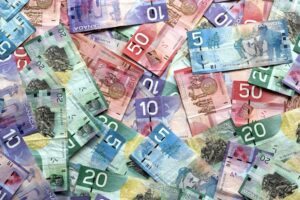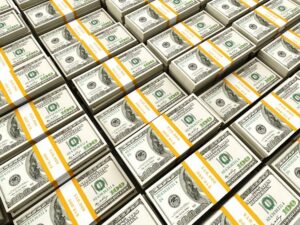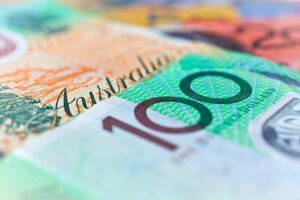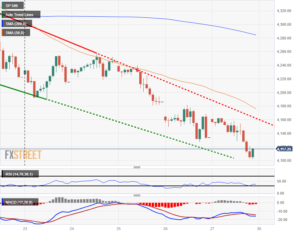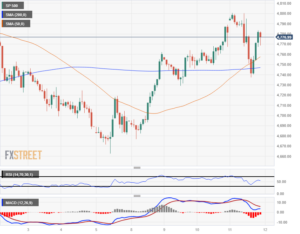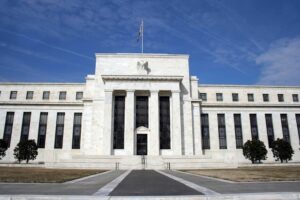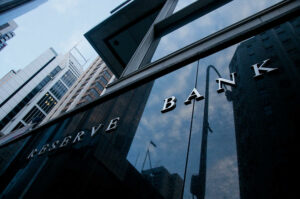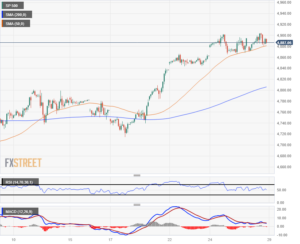
- The US Dollar Index steady in the 103-area though a technical rejection looms.
- The Greenback booked its third consecutive weekly decline on Friday.
- US traders are entering the last two weeks of normal trading before the holidays.
The US Dollar (USD) is going all in for risk off this Monday as tensions in the Middle East are creating risk off across the board in equity markets. With a flight to safe havens, yields are soaring in favor of the Greenback, which in it turns sees traders come back and buy the US Dollar. This makes an interesting case going forward, if the US Dollar Index (DXY) might be breaking back above a crucial technical indicator with more strenght ahead.
On the economic front, a very light calendar is due on Monday, but data will pile up throughout the week up to the main event on Friday: the US Jobs Report, or Nonfarm Payrolls. Expect to see mild moves in the crosses against the Greenback with most traders keeping their powder dry for Friday. Other job-related data like the JOLTS and ADP numbers will also be released this week.
Daily digest: US session comes with USD strenght
- Several reports emerge out of Gaza where Israeli tanks have been spotted just outside Khan younis.
- The spread between US and German bonds is soaring again, after tightening throughout November.
- At 15:00 GMT,US Factory Orders data for October are due to be released. Orders increased 2.8% in September, and markets expect them to decline 2.6% in OCtober.
- The US Treasury can benefit from the recent decline in US rates and will be placing a 3-month and a 6-month bill in the markets.
- Equities continue to slide in Asia. The Hong Kong Hang Seng Index leads the decline, losing more than 1%. European equities are mildly in the red, while US futures are flat ahead of the start of this trading week.
- The CME Group’s FedWatch Tool shows that markets are pricing in a 97.7% chance that the Federal Reserve will keep interest rates unchanged at its meeting next week.
- The benchmark 10-year US Treasury Note trades at 4.27%, and steady off this week’s low.
US Dollar Index technical analysis: Safe haven inflow
The US Dollar trades around 103.31 at the time of writing when gauged by the DXY US Dollar Index. From a technical point of view, the US Dollar is trading near crucial levels. Although last week the DXY was unable to break back above important technical levels, it appears that a more substantial catalyst is needed to push the DXY back above that crucial 200-day Simple Moving Average (SMA) near 103.58, visible on a daily chart. With the US Jobs Report on Friday, that might be enough for the Greenback to reestablish its status as King Dollar before closing up shop for the holidays.
The DXY is making its way further up towards the 200-day Simple Moving Average (SMA), which is near 103.58. The DXY could still make it through there should employment data trigger rising US yields again. A two-tiered pattern of a daily close lower followed by an opening higher would quickly see the DXY back above 104.28, with the 200-day and 100-day SMA turned over to support levels.
To the downside, historic levels from August are coming into play, when the Greenback summer rally took place. The lows of June make sense to look for some support, near 101.92, just below 102.00. Should more events take place that initiate further declines in US rates, expect to see a near-full unwind of the 2023 summer rally, heading to 100.82, followed by 100.00 and 99.41.
Central banks FAQs
Central Banks have a key mandate which is making sure that there is price stability in a country or region. Economies are constantly facing inflation or deflation when prices for certain goods and services are fluctuating. Constant rising prices for the same goods means inflation, constant lowered prices for the same goods means deflation. It is the task of the central bank to keep the demand in line by tweaking its policy rate. For the biggest central banks like the US Federal Reserve (Fed), the European Central Bank (ECB) or the Bank of England (BoE), the mandate is to keep inflation close to 2%.
A central bank has one important tool at its disposal to get inflation higher or lower, and that is by tweaking its benchmark policy rate, commonly known as interest rate. On pre-communicated moments, the central bank will issue a statement with its policy rate and provide additional reasoning on why it is either remaining or changing (cutting or hiking) it. Local banks will adjust their savings and lending rates accordingly, which in turn will make it either harder or easier for people to earn on their savings or for companies to take out loans and make investments in their businesses. When the central bank hikes interest rates substantially, this is called monetary tightening. When it is cutting its benchmark rate, it is called monetary easing.
A central bank is often politically independent. Members of the central bank policy board are passing through a series of panels and hearings before being appointed to a policy board seat. Each member in that board often has a certain conviction on how the central bank should control inflation and the subsequent monetary policy. Members that want a very loose monetary policy, with low rates and cheap lending, to boost the economy substantially while being content to see inflation slightly above 2%, are called ‘doves’. Members that rather want to see higher rates to reward savings and want to keep a lit on inflation at all time are called ‘hawks’ and will not rest until inflation is at or just below 2%.
Normally, there is a chairman or president who leads each meeting, needs to create a consensus between the hawks or doves and has his or her final say when it would come down to a vote split to avoid a 50-50 tie on whether the current policy should be adjusted. The chairman will deliver speeches which often can be followed live, where the current monetary stance and outlook is being communicated. A central bank will try to push forward its monetary policy without triggering violent swings in rates, equities, or its currency. All members of the central bank will channel their stance toward the markets in advance of a policy meeting event. A few days before a policy meeting takes place until the new policy has been communicated, members are forbidden to talk publicly. This is called the blackout period.
- SEO Powered Content & PR Distribution. Get Amplified Today.
- PlatoData.Network Vertical Generative Ai. Empower Yourself. Access Here.
- PlatoAiStream. Web3 Intelligence. Knowledge Amplified. Access Here.
- PlatoESG. Carbon, CleanTech, Energy, Environment, Solar, Waste Management. Access Here.
- PlatoHealth. Biotech and Clinical Trials Intelligence. Access Here.
- Source: https://www.fxstreet.com/news/us-dollar-steadies-on-increasing-safe-haven-bids-202312041230
- :has
- :is
- :not
- :where
- $UP
- 100
- 102
- 15%
- 2%
- 2023
- 28
- 31
- 33
- 36
- 41
- 58
- 97
- a
- above
- accordingly
- across
- Additional
- adjust
- Adjusted
- adp
- advance
- After
- again
- against
- ahead
- All
- also
- Although
- an
- analysis
- and
- Animate
- appears
- appointed
- ARE
- around
- AS
- asia
- At
- AUGUST
- average
- avoid
- back
- Bank
- Bank of England
- Bank of England (BOE)
- Banks
- BE
- been
- before
- being
- below
- Benchmark
- Benchmark Rate
- benefit
- between
- Biggest
- Bill
- board
- BoE
- Bonds
- boost
- Break
- Breaking
- businesses
- but
- buy
- by
- called
- CAN
- case
- Catalyst
- central
- Central Bank
- Central Banks
- certain
- chairman
- Chance
- changing
- Channel
- Chart
- cheap
- Close
- closing
- CME
- come
- comes
- coming
- commonly
- communicated
- Companies
- consecutive
- Consensus
- constant
- constantly
- content
- continue
- control
- control inflation
- conviction
- could
- country
- create
- Creating
- crucial
- Currency
- Current
- cutting
- daily
- data
- Days
- Decline
- Declines
- deflation
- deliver
- Demand
- Digest
- disposal
- Dollar
- dollar index
- down
- downside
- dry
- due
- Dxy
- each
- earn
- easier
- easing
- East
- ECB
- Economic
- economies
- economy
- either
- emerge
- employment
- ends
- England
- enough
- entering
- Equities
- equity
- Equity Markets
- European
- European Central Bank
- European equities
- Event
- events
- expanded
- expect
- facing
- factory
- FAQ
- favor
- Fed
- Federal
- federal reserve
- few
- final
- flat
- flight
- followed
- For
- Forward
- Friday
- from
- front
- further
- Futures
- German
- get
- GMT
- going
- goods
- Greenback
- Group’s
- Hang
- Hang Seng
- harder
- Have
- haven
- head
- Heading
- her
- higher
- Hikes
- hiking
- his
- historic
- holidays
- Hong
- Hong Kong
- How
- HTTPS
- if
- important
- in
- increased
- independent
- index
- Indicator
- inflation
- initiate
- interest
- INTEREST RATE
- Interest Rates
- interesting
- into
- Investments
- Israeli
- issue
- IT
- ITS
- Jobs
- jobs report
- jpg
- june
- just
- Keep
- keeping
- Key
- King
- known
- Kong
- Last
- Leads
- lending
- levels
- light
- like
- Line
- live
- Loans
- local
- LOCAL BANKS
- Look
- losing
- Low
- low rates
- lower
- lowered
- Lows
- Main
- make
- MAKES
- Making
- mandate
- Markets
- means
- meeting
- member
- Members
- Middle
- Middle East
- might
- mild
- Mode
- module
- Moments
- Monday
- Monetary
- Monetary Policy
- monetary tightening
- more
- most
- moves
- moving
- moving average
- Near
- needed
- needs
- New
- new policy
- next
- next week
- normal
- note
- November
- numbers
- october
- of
- off
- often
- on
- ONE
- opening
- or
- orders
- Other
- out
- Outlook
- outside
- over
- panels
- Passing
- Pattern
- People
- period
- Place
- placing
- plato
- Plato Data Intelligence
- PlatoData
- Play
- Point
- Point of View
- policy
- politically
- president
- price
- Prices
- pricing
- provide
- publicly
- Push
- quickly
- rally
- Rate
- Rates
- rather
- recent
- Red
- region
- released
- remaining
- report
- Reports
- Reserve
- REST
- Reward
- rising
- Risk
- safe
- Safe Haven
- same
- Savings
- say
- see
- sees
- sense
- September
- Series
- Services
- session
- Shop
- should
- Shows
- Simple
- Slide
- SMA
- soaring
- some
- speeches
- split
- spread
- Stability
- stance
- start
- starts
- Statement
- Status
- steady
- Still
- subsequent
- substantial
- substantially
- summer
- support
- support levels
- sure
- Swings
- Take
- takes
- Talk
- Tanks
- Task
- Technical
- Technical Analysis
- tensions
- than
- that
- The
- The US Federal Reserve
- their
- Them
- There.
- Third
- this
- this week
- though?
- Through
- throughout
- TIE
- tightening
- time
- to
- took
- tool
- toward
- towards
- Traders
- trades
- Trading
- treasury
- trigger
- triggering
- try
- TURN
- Turned
- turns
- tweaking
- two
- unable
- until
- Unwind
- us
- US Dollar
- US Dollar Index
- US Factory Orders
- US Federal
- us federal reserve
- us futures
- US Jobs Report
- US Treasury
- US yields
- USD
- very
- View
- visible
- Vote
- want
- was
- Way..
- week
- weekly
- Weeks
- when
- whether
- which
- while
- WHO
- why
- will
- with
- without
- would
- writing
- yields
- zephyrnet


